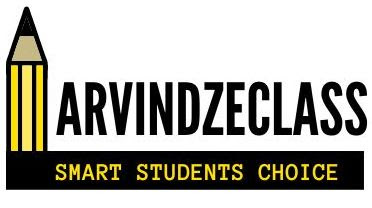Class 11 Artificial Intelligent Code 843 Solutions
Session 2025-26
Class 11 Artificial Intelligence Syllabus, Class 11 AI Book, Class 11 AI NCERT Book section Part A and Part B
What is data in Artificial Intelligence (AI)?
Data is a piece of information such as a name, age, photo of someone. Data of last few years of a market help us to analysis a market and take decision. Data is also called new oil of 21th century.
Companies like Google, Amazon, and Netflix are using data science to develop powerful recommendation system for their users. You Tube recommendations are based on our search history. Amazon recommendation is personalized based on our purchasing habits.
Class 11 AI
Chapter - AI for Everyone
Type of Data:
Data can be divided into three categories,
1) Structured Data: Structured data referred to predefined data model like table in which data is arranged in rows and column. It includes name, age, and address of a student. This types of data is stored in a database or Spreadsheet files which makes it easy to understand and analyze.
2) Unstructured Data: Unstructured data is not organized in a tabular form which makes it difficult to analyze and organize data. Some examples of unstructured data are image, text document, and emails.
3) Semi-structured Data: Semi-structured data falls between structured data and unstructured data. It is not organized as structured data but information can be extracted from it. Some examples of semi-structured data is social medial posts and YouTube videos with hash tags.
What is Natural Language Processing (NLP) in Artificial Intelligence (AI)?
NLP is the field of computer science and AI which focuses teaching machine to interact in language like human beings. The goal of NLP is to train a machine to understand content in written and spoken form.
Components of NLP:
1) Natural Language Understanding (NLU): It helps a machine to understand and analyze human language and extract the meaning of it.NLU is generally used in business application to understand the customer’s problem in both spoken and written format.
2) Natural Language Generation (NLG): It acts as a translator that converts computer data into natural language in spoken and written format.
What is Computer Vision (CV) in Artificial Intelligence (AI)?
CV is a domain of AI which helps a machine to see and analyze visual objects and take decision at real time. CV helps AI system to extract information what it sees just like human eye. The goal of CV is to train machines to see, process, and provide useful information. This can be done by providing lots of data to machine which can be analyzed over and over until it recognizes it.
Components of Computer Vision:
1) Machine Learning (ML): ML helps a machine to understand visual data. To achieve it enough data is feed and trained a machine using supervised Learning, Unsupervised Learning, and Reinforcement method.
2) Artificial Neural Network (ANN): ANN enables a machine to process image by breaking it down into pixels and transforms it into digital data by applying algorithms before comparing the captured images with those stored in database.
What are the different terminologies used in Artificial Intelligence?
1) Artificial Intelligence (AI): AI refers to the simulation of human brain by machines including learning, reasoning, and self-correction. It refers to a technology which can mimic human intelligence. AI machines don’t think, but it calculates.
2) Machine Learning (ML): ML is a subset of AI which focuses on developing algorithm which enables machines to learn from data and take decision without programmed by anyone.
3) Deep Learning (DL): DL is the subset of ML which is inspired by human neurons network. DL imitates the human brain to process data and creates patterns to take decisions. The neurons network is also called Artificial Neuron Network (ANN). It has more than three layers so it is called deep learning.
Components of ANN:
The ANN is divided into three layers
1) Input Layer: The first layer is called input layer which is responsible to receive input data. It doesn’t process data but it passes the data to the next layer.
2) Hidden Layer: The second layer is called hidden layer where the actual processing takes place. This layer could have more than one layer. Each layer in hidden layer has its own machine learning algorithm.
3) Output Layer: The output generated in hidden layer is passed to the next layer. The final layer is called the output layer which provides the final processed result.
What are the differences between Machine Learning (ML) and Deep Learning (DL)?
|
Machine Learning (ML) |
Deep Learning (DL) |
|
1) ML works on small Dataset. |
1) DL works on large Dataset. |
|
2) ML depends on low-end-machine |
2) DL depends on high-end-machine |
|
3) ML divides tasks into subtask, process them individually and finally combines the result |
3) DL solves tasks end-to-end. |
|
4) ML takes less time to train. |
4) DL takes more time to rain. |
|
5) ML takes more time to test data. |
5) DL takes less time to test data. |
What are the types of Machine Learning in Artificial Intelligence?
1) Supervised Learning (SL): In SL data machine learns from labeled data. Machine is trained in the supervision of labeled data set. The machine then becomes to predict right output.
2) Unsupervised Learning (UL): In UL machine get unlabeled data set. The machine analyze the input data to find the patterns and gives output. There is not training is given to a machine.
3) Reinforcement Learning (RL): In RL machine gets unlabeled data and no training is given to the machine. When machine gives right output, it gets reward. After some time the machine starts predicting right output.





No comments:
Post a Comment